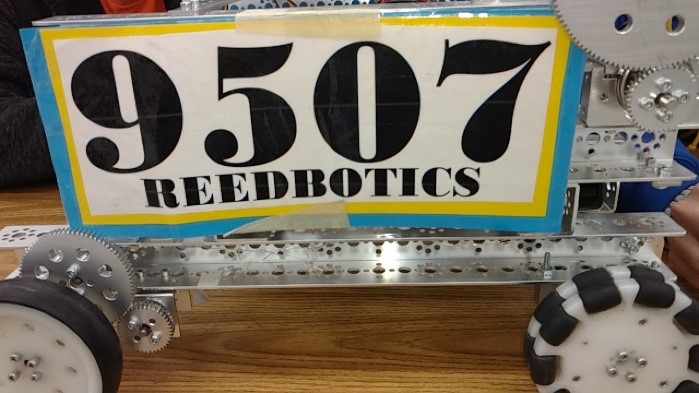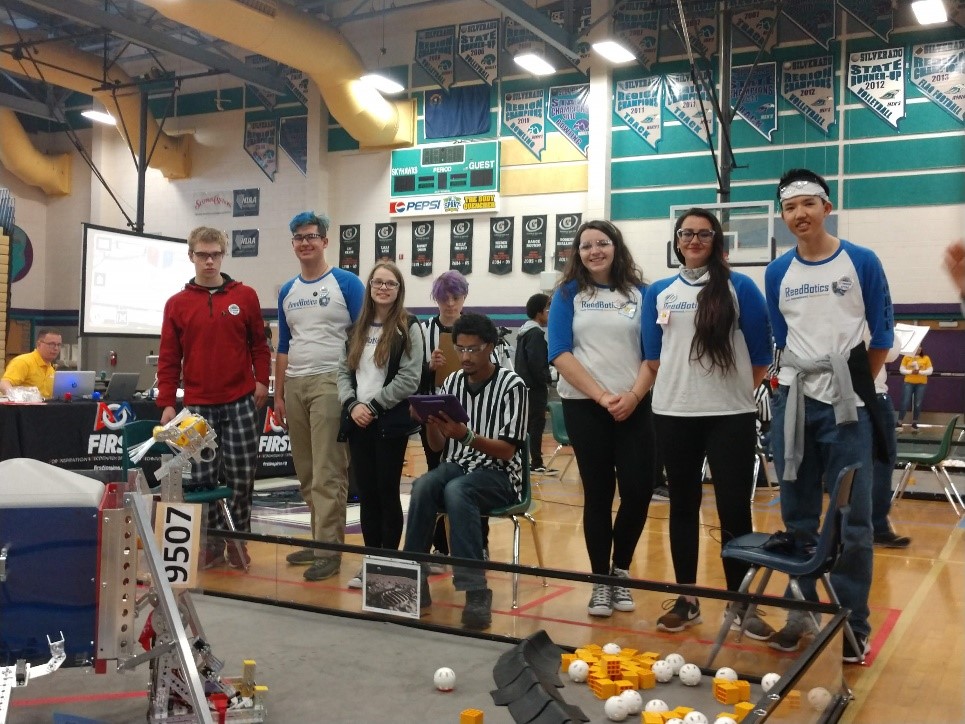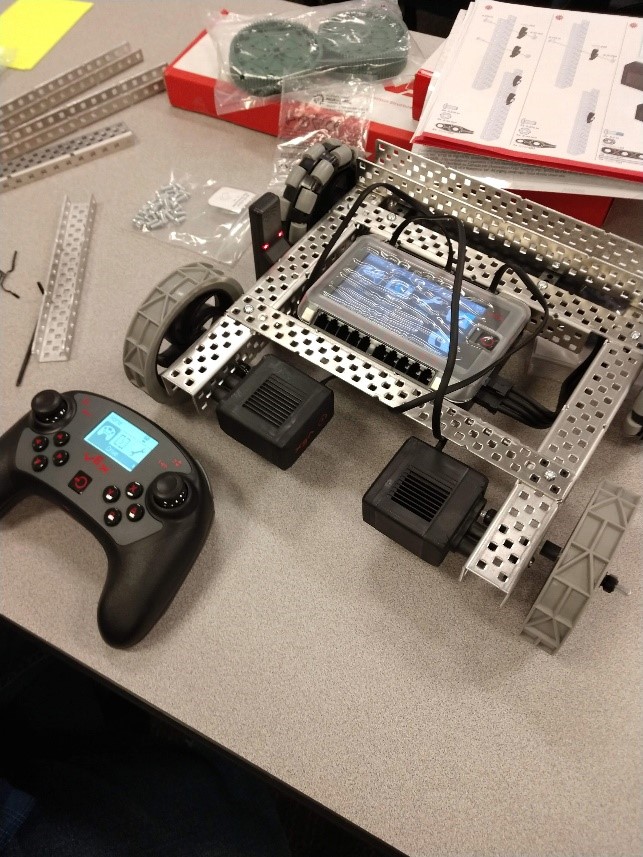


Simple Robot, Version 1: The Dancing Robot Prepping for the first match of the State Meet in Las Vegas Next year we will join the VEX Robotics Competition
Leigh Metcalfe is one of six Nevada teachers named 2018 STEM Teacher of the Year. An accidental job in outdoor education helped Leigh realize that she loved teaching science as much as she loved learning it. After obtaining her Master’s degree, teaching license and teaching a few years, her approach was transformed by a National Science Foundation grant that encouraged her to invite engineering graduate students into her classroom to increase STEM. Pushing students to solve real-world problems through engineering and technology led her to start the robotics/engineering club. At the same time, her school developed engineering focused pathways for students interested in going into environmental engineering related fields. Leigh designed a course called Energy Technologies that encouraged students to learn the fundamentals of engineering by exploring electricity and electronics through energy-related problems. Leigh is very encouraged by youth willing to push themselves in science, math, and technology and wants to provide opportunities for them to be prepared for college and careers in STEM. In her guest blog below, Leigh describes her experiences with FIRST Robotics.
STEM and Robotics by Leigh Metcalfe
A visit from FIRST (For Inspiration and Recognition in Science and Technology) Robotics to Edward C Reed High School irreversibly changed my teaching and my extracurricular goals forever. During the annual school club fair, an event where students can learn about the school's extracurricular activities, 6 years ago a student from UNR visited with a robot. It was small, driven by a video game controller and the students were excited. A small group wanted to start a club at the school and build a robot just like the one they had seen. With 4 members- 3 boys and 1 girl, Reedbotics was formed.
The newly formed club competed the next school year in FTC (FIRST Tech Challenge) in the game called “Cascade Effect”. They did not have any mentors, no experts, and no real help from the community. Together, we figured out how to build a robot, program it, and get it to move around well enough in the “driver controlled” portion of the match. The students wanted to earn points in autonomous mode, the part of the game where students write code to pre-program the robot to do tasks without any additional input by the driver. By the end of the season, they wrote a basic “dancing robot” autonomous program that would consistently trigger a switch that released the “Cascade Effect” - the whiffle balls stored above the robots were released and allowed to cascade to the floor in order to score additional points in the competition. That was their first major achievement and it inspired them to recruit new members and make the team more diverse. The next year, the team grew to 8 students and I recruited a mentor in programming from graduate students at UNR.
At this point, the students’ knowledge and understanding of robotics and programming exponentially exceeded my own and I have been trying to catch up ever since. Any teacher that fears they do not have enough background knowledge to have a team- fear not. The whole goal is for the students to do the learning, the work, and the critical thinking needed to compete. As a teacher, I learned that I needed to step back and provide them the space to work and find mentors from the community that would allow them to grow. Even though the students are quite advanced in their skills at this point, I still serve a valuable role by asking questions that drive them to think through their problems. This, in my opinion, is the best kind of help any teacher or mentor can provide.
As the group grew, we reached enough members to split into two teams. With 5 girls and 5 boys, the girls decided to form the first all-girl team in Northern Nevada calling themselves “G-Force.” During that season both teams worked really hard and excelled. They tackled more complex programming challenges and worked together to make sure both teams figured out problems and grew together. By the end of the year, they had recruited even more members and decided that the teams would be more diverse if they became co-ed teams again. This change allowed us to have a rookie and an advanced team so the new members could have the productive struggle needed to learn the systems while the experienced team could work on growing from what they learned in the previous years. Together, they could all support each other throughout the season. We are proud to still be a team that is 50-50 male to female even as the group grew to 20 students this year. We are also proud that all members carry their weight, contribute to the team success, and push for constant improvement.
I receive inspiration from all of my students each day in the classroom. The robotics students are just a small subset of students tackling STEM challenges on a regular basis. Other students are working on proposals to reduce energy use in their school. The students in my Advanced Energy Technology classes are researching and writing a proposal to remodel a local business to reduce energy, waste, and water use by using innovative new technologies and tried and true passive solar/cooling techniques. When I read student's ideas, I am inspired by their creativity, willingness to think outside the box and desire to challenge the norms. I have a renewed faith that my students have the desire to be future leaders; that they will use their STEM knowledge to tackle tomorrow’s problems.